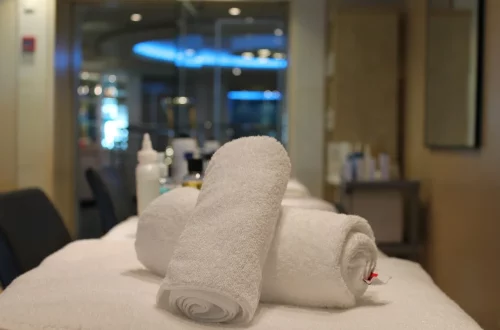
Choosing the Right Bulldog Muzzle for Comfort and Safety
Choosing the right muzzle for your bulldog is an essential consideration for every responsible pet owner. Bulldogs are known for their gentle temperament and loyalty, but like any breed, they can exhibit anxiety or aggression in specific situations. A muzzle can be a useful tool, not only for the safety of your dog but also for others around them. It’s important to recognize that a muzzle is not a punishment; rather, it can provide a sense of security for both the dog and the owner.
When selecting a muzzle, comfort and safety should be your top priorities. The right muzzle should allow your bulldog to breathe, bark, and drink water while still providing the necessary restraint in various environments, such as vet visits, grooming sessions, or dog parks. Muzzles come in various styles, materials, and sizes, so it’s crucial to understand the needs of your bulldog and the purpose of the muzzle.
In this article, we will explore several critical factors to consider when choosing a bulldog muzzle that ensures both comfort and safety for your furry friend.
Understanding Muzzle Types and Their Uses
Muzzles come in different types, each designed for specific purposes and situations. Understanding the various types can help you make an informed decision that best suits your bulldog’s needs.
The most common types of muzzles are basket muzzles, soft muzzles, and mesh muzzles. Each type has its unique advantages and disadvantages. Basket muzzles, for instance, are made from materials like plastic or metal and allow for greater ventilation, which is essential for bulldogs, especially given their brachycephalic nature. These muzzles are ideal for situations where you want to prevent biting while still allowing your dog to pant and drink water.
On the other hand, soft muzzles are typically made from fabric or nylon and can be more comfortable for short-term use. They are often used during vet visits or grooming sessions where the dog may be anxious but not necessarily aggressive. However, soft muzzles can restrict panting, so they should not be used for extended periods or in hot weather.
Mesh muzzles combine elements of both soft and basket styles. They are lightweight and breathable, making them suitable for short outings. However, just like soft muzzles, they may not be ideal for prolonged use as they can limit the dog’s ability to breathe freely.
When choosing a muzzle, consider your bulldog’s behavior and the situations in which it will be used. If your dog is prone to anxiety or aggression, a basket muzzle may provide more comfort and safety in various environments. For occasional trips to the vet, a soft muzzle may suffice. Understanding the purpose of each type will ensure you select the right muzzle for your bulldog’s specific needs.
Finding the Right Fit for Your Bulldog
One of the most critical aspects of selecting a muzzle is ensuring the right fit. A poorly fitting muzzle can lead to discomfort, anxiety, and even injury for your bulldog. To find the right size, you’ll need to measure your dog accurately.
Start by measuring the circumference of your bulldog’s snout, just below the eyes. This measurement will help determine the width of the muzzle. Next, measure the length of the snout from the tip of the nose to the point where the snout meets the skull. These measurements will guide you in selecting a muzzle that fits comfortably without being too tight.
When trying on a muzzle, make sure your bulldog can comfortably open their mouth a bit. This allows them to pant, which is crucial for their breathing, especially for bulldogs that are more prone to respiratory issues. The muzzle should not rub against their eyes or cause any irritation.
Once you have chosen a muzzle, it’s a good idea to allow your bulldog to acclimate to it gradually. Start by letting them wear it for a few minutes at a time, rewarding them with treats and praise to create a positive association. Gradually increase the duration as they become more comfortable with the muzzle on.
Always supervise your bulldog while they are wearing a muzzle, especially during the initial adjustment period. Ensuring a proper fit not only enhances comfort but also helps to keep your bulldog safe and secure in various environments, making outings more enjoyable for both of you.
Material Considerations for Comfort and Durability
The materials used in muzzle construction can significantly impact both comfort and durability. Bulldogs have unique facial structures, and the right material will ensure that the muzzle fits well without causing discomfort or chafing.
Basket muzzles are often made from sturdy plastic or metal, which provides durability while also allowing for airflow. This is particularly important for bulldogs, as they can overheat quickly. Look for muzzles with padded straps made from soft materials to prevent rubbing on the sensitive areas of your dog’s face.
Soft muzzles, usually made from fabric or nylon, can be more comfortable for short-term use, but their durability may be limited. If your bulldog is an active chewer or tends to pull on the muzzle, a soft option may not hold up over time. It’s essential to examine the stitching and overall construction to ensure it can withstand your dog’s behavior.
Mesh muzzles are another alternative, typically designed for short outings. While they are lightweight and breathable, they may not be as durable as basket or soft muzzles. If you choose a mesh option, ensure that it is made from high-quality materials to prevent wear and tear.
Regardless of the type you choose, always look for muzzles that are easy to clean. Muzzles can become dirty and smelly, so selecting a washable option will help maintain hygiene and comfort for your bulldog. Ultimately, the right material will contribute to the overall comfort and safety of the muzzle, making outings with your bulldog more enjoyable.
Training Your Bulldog to Accept a Muzzle
Introducing a muzzle to your bulldog may require some training, especially if they are not accustomed to wearing one. Positive reinforcement is a powerful tool in helping your dog accept the muzzle without fear or resistance.
Start by allowing your bulldog to see and sniff the muzzle without putting it on. This helps them become familiar with the object and reduces any anxiety associated with it. You can reward them with treats and praise during this initial introduction to create a positive association.
Once your bulldog seems comfortable with the muzzle, try placing it on them for short periods. Begin with just a few minutes and gradually increase the time as they become more accustomed to it. Be sure to offer treats and praise during and after each session to reinforce their positive feelings about wearing the muzzle.
It’s important to remain patient during this process. If your bulldog shows signs of stress or anxiety, take a step back and allow them to adjust at their own pace. Forcing a muzzle on a dog can lead to negative associations, making future attempts much more difficult.
In addition to acclimatizing your bulldog to the muzzle, consider practicing with it in various environments. This will help your dog associate the muzzle with positive experiences, whether you’re at the vet, in the park, or during grooming sessions. With time and patience, your bulldog can learn to accept the muzzle as a normal part of their routine.
In conclusion, choosing the right muzzle for your bulldog is crucial for their comfort and safety. By understanding the types of muzzles available, ensuring a proper fit, considering materials, and training your dog to accept the muzzle, you can enhance your bulldog’s experiences in various situations. Remember to always prioritize your dog’s well-being and comfort, making their muzzle-wearing experience as positive as possible.
**Disclaimer:** This article is not intended as medical advice. If you have concerns about your dog’s health or behavior, please consult a veterinarian or a professional dog trainer for guidance.




